The rise of ‘softer’ workplace designs and blurred typologies leaves an opening for a new kind of materiality. We look at how this area was explored at Orgatec 2018. Hint: it’s about the convergence of technology and materials.
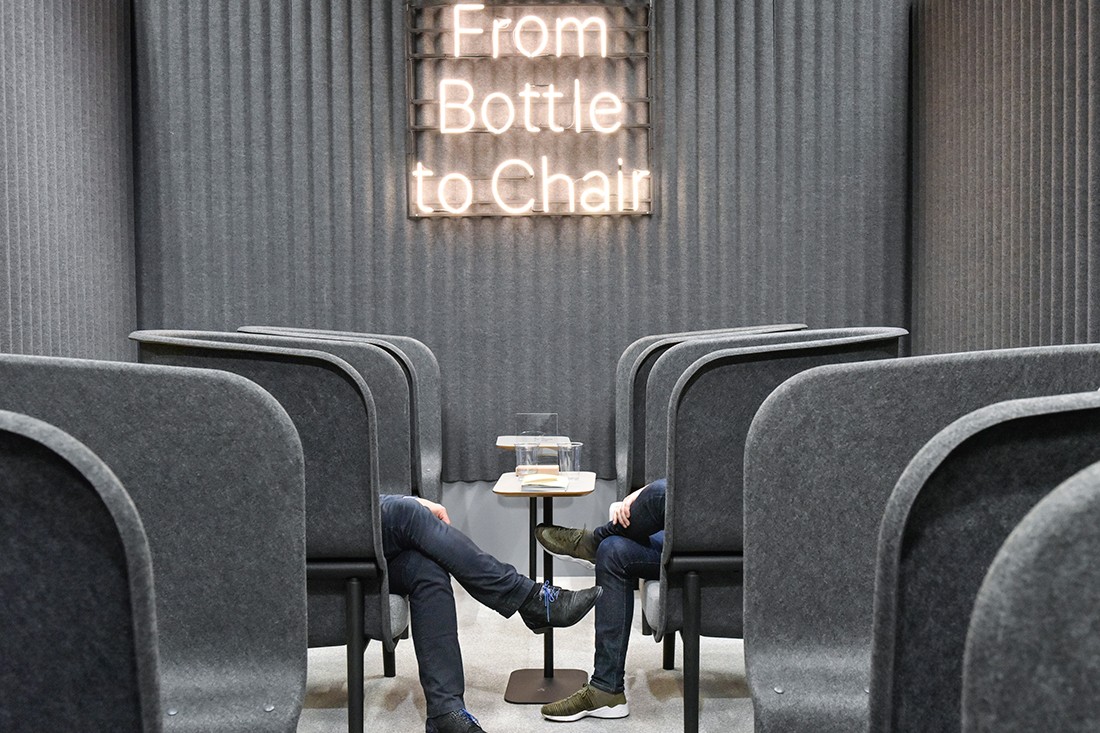
DeVorm's stand at Orgatec 2018
November 2nd, 2018
Digital interfaces dominate our work and personal lives today, and the proliferation of digital technology is of course particularly felt in the office. Realising the changing way humans are interacting with materials, a special exhibition was curated at Orgatec 2018.
The #materialsculture exhibition area at the commercial trade show event explored not just changing types of materials but their intersection with digital technology. Curated by Dr Sascha Peters, a German trend forecaster, the space brought together an impressive array of smart, experimental materials that will no doubt be finding their way into our workplaces sometime soon.
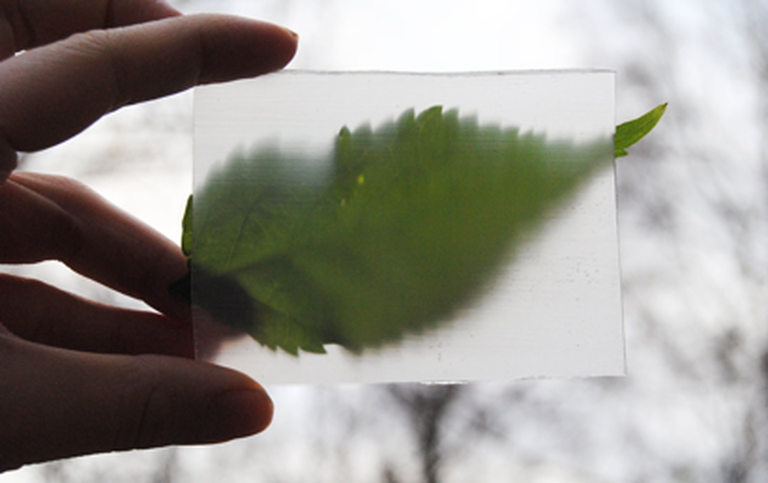
Cellutech’s transparent wood, which has the strength of timber, is made from a wood-polymer composite
A great example on display was a unique product and approach to material innovation developed in Sweden. The KTH Royal Institute of Technology from Stockholm has been developing a sustainable cellulose fibre – think transparent wood, hollow cellulose balls and magnetic wood composites. Through explorations in technology and design, this cutting-edge product has endless applications and makes up for Sweden’s drastic decline in paper production.
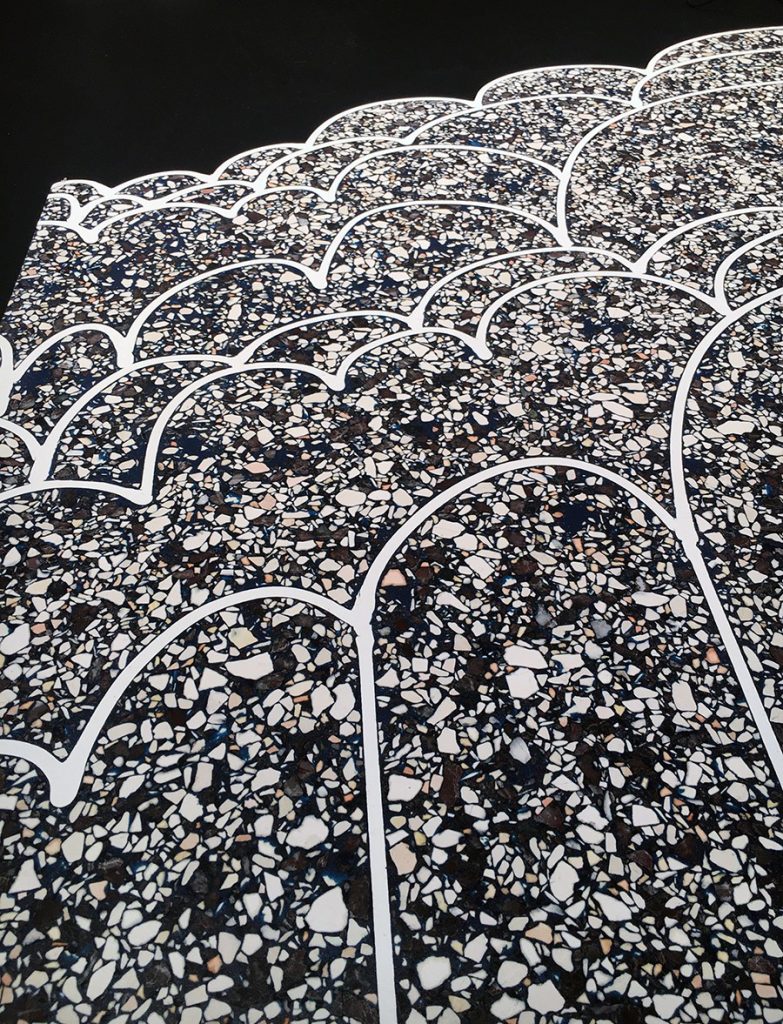
Aectual Flooring – 3D printed with a terrazzo infill. Designs can be customised and materials are bio-based or recycled
Where does Dr Peters see materials evolving in the not-too-distant future? He believes that there will be a continuing increase in the demand for material traceability and sustainability. Having the ability to review and trace materials through a digital interface will become the norm – particularly as sustainability and accreditation targets become more stringent.
It’s this juncture of natural and digital that will allow for materials, furniture and thus workplaces to be monitored through a continual loop. This is the future of materiality in the workplace – one that blends digital experience with sustainable traceability and a science-like experimentation.
Already bringing this thinking to market are brands like DeVorm and emeco, both of which use recycled plastics and materials in the production of their products. These are companies driving real-life examples, which are feeding the material loop for the better.
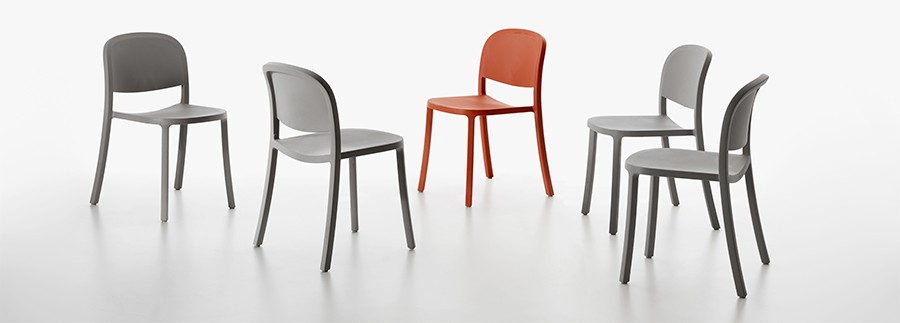
Emeco’s 1 Inch Reclaimed chair, designed by Jasper Morrison, uses 75-per-cent waste polypropylene and 15-per-cent waste wood fibre
Where do these new material experiments fall in terms of our current workplace design aesthetics and materiality? There’s no denying that our workplaces are getting softer and more comfortable. And Orgatec 2018 presented plenty of brands that are using materiality to push for a generally softer workplace aesthetic.
One way this can be calculated is in the inclusion of fabric houses such as Kvadrat and Instyle, but also in the increase of more traditionally residential brands like Normann Copenhagen and Muuto.
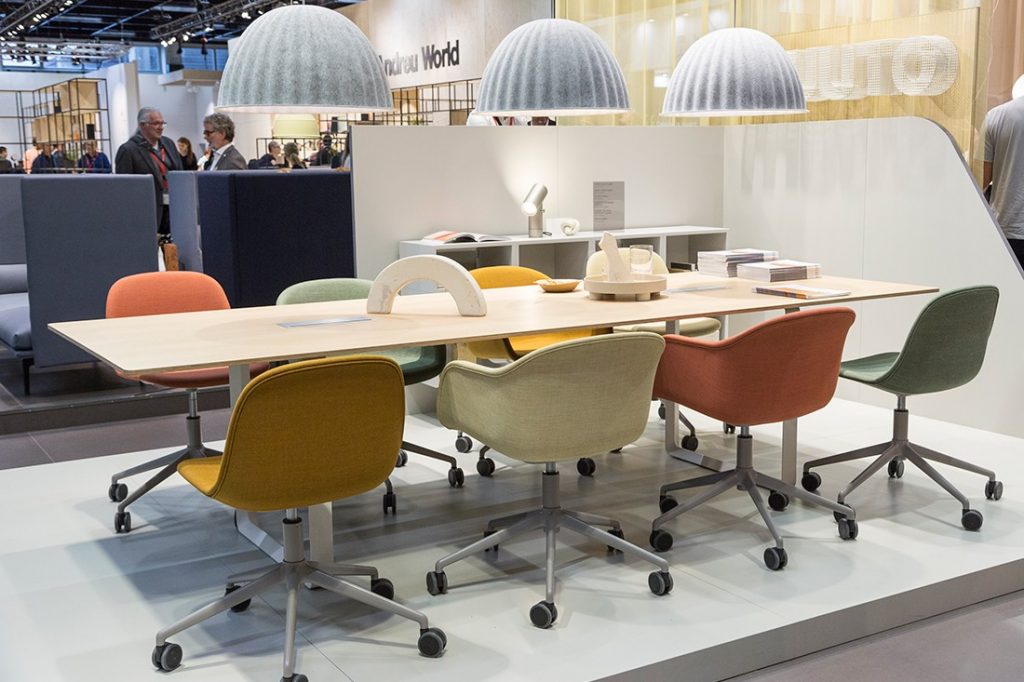
Muuto’s stand at Orgatec 2018
Having a more cosy and welcoming workplace, and one that is accountable for its impact on the world can only be a good thing. Lets see what happens when the digital and the soft collide…
INDESIGN is on instagram
Follow @indesignlive
A searchable and comprehensive guide for specifying leading products and their suppliers
Keep up to date with the latest and greatest from our industry BFF's!
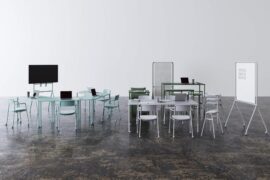
Welcomed to the Australian design scene in 2024, Kokuyo is set to redefine collaboration, bringing its unique blend of colour and function to individuals and corporations, designed to be used Any Way!
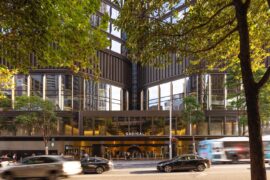
Rising above the new Sydney Metro Gadigal Station on Pitt Street, Investa’s Parkline Place is redefining the office property aesthetic.
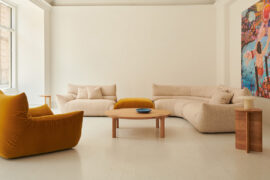
A curated exhibition in Frederiksstaden captures the spirit of Australian design

London-based design duo Raw Edges have joined forces with Established & Sons and Tongue & Groove to introduce Wall to Wall – a hand-stained, “living collection” that transforms parquet flooring into a canvas of colour, pattern, and possibility.

After 23 successful years operating jointly as Kvadrat Maharam, Kvadrat and Maharam will continue as independent entities from 1 July 2025.

As Kvadrat announces its full independence, Njusja de Gier shares some insight on her fascinating and rather unorthodox career path.
The internet never sleeps! Here's the stuff you might have missed
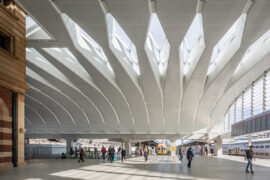
The Australian Institute of Architects has unveiled 43 projects representing the pinnacle of contemporary design, with winners addressing housing, climate and affordability crises through innovative solutions.

Bean Buro’s Singapore office for Anglo-Eastern is a poetic continuation of their Hong Kong headquarters — a workplace that balances identity and calm.